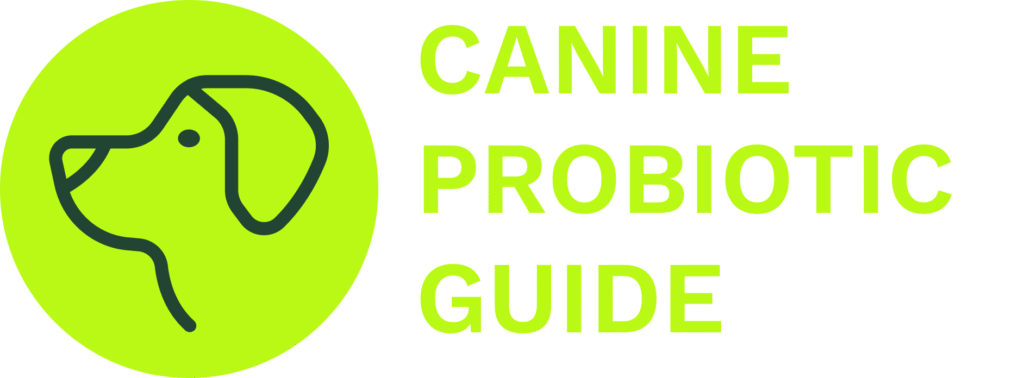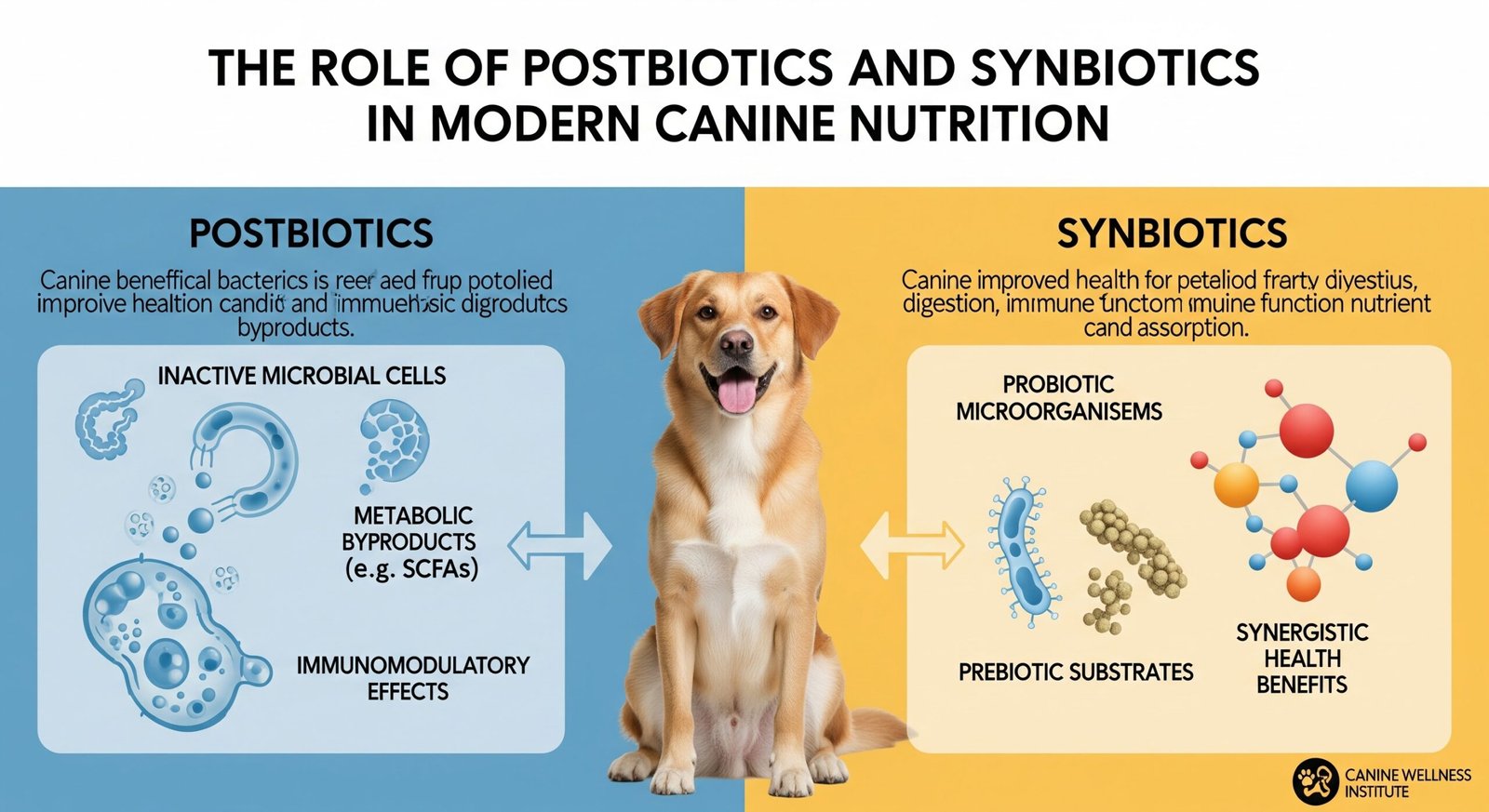Maintaining a balanced gut microbiome is fundamental to canine health, impacting everything from digestion and immune resilience to skin condition and behavior. While probiotics and prebiotics have garnered widespread attention, postbiotics and synbiotics represent cutting-edge strategies that harness both microbial metabolites and synergistic combinations of live microbes with their preferred substrates. This in-depth exploration covers definitions, mechanisms, scientific evidence, and practical recommendations for integrating postbiotics and synbiotics into your dog’s diet.
1. Defining Postbiotics and Synbiotics
Postbiotics are non-viable microbial cells, cell components, or metabolic byproducts—such as short-chain fatty acids (SCFAs), peptides, enzymes, and cell wall fragments—that confer health benefits when administered in adequate amounts. Unlike probiotics, they do not require viability and are more stable during manufacturing and storage, making them suitable for inclusion in dry kibble and treats.
Synbiotics combine probiotics (live beneficial microorganisms) and prebiotics (selective substrates that feed these microbes) in a single formulation. By delivering both the “seeds” (microbes) and the “soil” (nutrients they thrive on), synbiotics aim to enhance survival, colonization, and activity of beneficial bacteria in the gastrointestinal tract.
2. Mechanisms of Action
2.1 Postbiotic Mechanisms
- Modulation of Microbial Environment: SCFAs such as acetate, propionate, and butyrate lower luminal pH, inhibiting pathogenic species and promoting commensals.
- Enhancement of Barrier Function: Postbiotic metabolites upregulate tight junction proteins, strengthening the intestinal epithelium against translocation of toxins.
- Immunomodulation: Components like lipoteichoic acids and peptidoglycans interact with Toll-like receptors on immune cells, balancing pro- and anti-inflammatory cytokine production.
- Antimicrobial Effects: Bacteriocins and other antimicrobial peptides directly inhibit pathogens without disturbing beneficial flora.
2.2 Synbiotic Synergy
- Improved Viability: Prebiotics (e.g., fructooligosaccharides, inulin) nourish co-administered probiotic strains, enhancing their survival through gastric acidity and bile exposure.
- Optimized Colonization: Synbiotics foster rapid establishment of beneficial microbes, outcompeting opportunistic pathogens for adhesion sites.
- Enhanced Metabolite Production: Probiotic fermentation of prebiotics increases SCFA output, amplifying postbiotic-like benefits within the gut.
3. Evidence of Benefits in Dogs
3.1 Postbiotics in Clinical Trials
- Halitosis Reduction: A randomized, placebo-controlled trial of a canine oral postbiotic containing heat-killed Pediococcus pentosaceus and Bacillus subtilis fermentation products demonstrated a 27% reduction in volatile sulfur compounds (VSCs) by Day 14, significantly improving breath odor.
- Skin Health and Allergies: Indole-rich postbiotics have been shown to decrease pruritic dermatitis scores by modulating gut taxa and upregulating anti-inflammatory pathways.
- Immune Modulation: Heat-killed Lactobacillus rhamnosus and L. reuteri postbiotics stimulated canine peripheral blood mononuclear cells to produce balanced cytokine profiles, suggesting potential in managing atopic and autoimmune conditions.
3.2 Synbiotic Strategies
- Microbiota Diversity and Immune Response: Beagle dogs fed a synbiotic diet combining B. velezensis DSM15544 with fibers (inulin, beet pulp, pea fiber) exhibited increased fecal SCFA concentrations, higher fecal IgA, and shifts toward beneficial taxa like Faecalibacterium prausnitzii, without adverse effects on stool consistency.
- Digestive Health: In vitro canine fermentation models showed that synbiotic blends elevated acetate and propionate levels and promoted growth of Bifidobacterium spp., indicating enhanced saccharolytic fermentation and barrier support.
4. Practical Applications
4.1 Selecting Postbiotic Products
- Look for heat-killed fermentation matrices that list specific microbial origins (e.g., Lactiplantibacillus plantarum CECT 9161) and quantified bioactive components.
- Choose products with validated clinical endpoints, such as measured VSC reduction for oral health or confirmed cytokine modulation for immune support.
4.2 Incorporating Synbiotics
- Therapeutic Use: For acute GI disturbances or antibiotic recovery, select synbiotic supplements containing proven strains (Enterococcus faecium, Bifidobacterium animalis) paired with FOS or inulin at ≥1% inclusion to restore microbiota resilience quickly.
- Maintenance Nutrition: Integrate synbiotic-enhanced kibble or toppers for dogs with chronic conditions—such as IBD, atopic dermatitis, or obesity—to sustain SCFA production and anti-inflammatory benefits over months.
- Dosing Guidelines: Aim for ≥1×10⁹ CFU of probiotic components per kg of body weight, with prebiotic levels at 0.5–2% of daily intake; adjust based on clinical response and veterinary guidance.
5. Future Directions
- Personalized Synbiotics: Advances in canine microbiome profiling may enable tailored synbiotic blends that match individual gut signatures for maximal efficacy.
- Next-Generation Postbiotics: Exploration of microbially derived exosomes and novel metabolites could yield targeted therapies for neurological, hepatic, and renal disorders via the gut–organ axes.
- Regulatory Standardization: As postbiotic and synbiotic markets expand, establishing robust quality standards and labeling guidelines will be critical to ensure product consistency and consumer trust.
Harnessing the combined strengths of postbiotics and synbiotics represents a transformative approach in canine nutrition. By delivering stable, bioactive microbial metabolites alongside synergistic live cultures and their substrates, pet owners and veterinarians can optimize gut health, bolster immunity, and address a spectrum of chronic and acute conditions—paving the way for improved longevity and quality of life in our canine companions.





